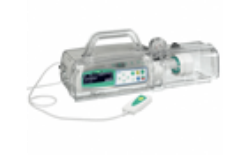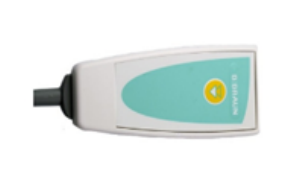Patient Controlled Analgesia (PCA)
The purpose of this information leaflet is to explain how you can have control over your own pain relief using a machine called a PCA. PCA stands for ‘Patient Controlled Analgesia’.
The leaflet describes the PCA infusion and how it works, together with any side effects that may occur. Patient Controlled Analgesia is a method of pain relief that can be provided after surgery, and/or for uncontrolled severe pain.
What are the benefits of PCA?
- you are in control of your pain relief
- fewer side effects such as sickness and vomiting
- no delay in receiving pain relief
- it works quickly.

What is PCA?
The aim of the PCA is to make you comfortable so that you can move and take deep breaths. It is not always possible to be completely pain free. This system relies on a special pump, which contains a ‘morphine-like’ opioid pain-relieving drug in a syringe, which is in a locked box for safety. A handheld button is connected to the PCA pump, which, when pressed, gives a small amount of opioid medicine straight into a vein usually in your arm or hand via a thin tube (cannula).
How does PCA work?
Each PCA pump comes with its own handset. You hold this in your hand and press the button when you need pain relief. When you press the button, the pump delivers the pain relief medication through the plastic tube (cannula) into a vein in your arm or hand. The PCA pump device will give you a pre-set (fixed) amount of pain relief medication when you press the button so you cannot overdose.

How often should I press the button?
When you start to feel uncomfortable you press the button attached to the PCA pump. When you press the button you only get a very small dose of opioid so you may need to press it several times to get comfortable as the pump ‘locks out’ for three minutes for safety reasons.
Once the button has been pushed and the pump has delivered the pain relief medication, it will ‘lock out’ for three minutes so you have time to feel the benefit of the medication before getting another dose. You should use it two to three times before you do something active like getting out of bed or having physiotherapy.
Can anyone else press the button for me?
No. You must be the only person to press the button. Do not allow any hospital staff, friends or relatives to do so for you.
How quickly will the pain relief medication work?
It will not work immediately. The pain relief medication needs to get to the brain and spinal cord, and it may take five minutes or longer for the pain relief medication to work fully. If you are about to do something that you know will be uncomfortable, such as deep breathing exercises or moving, press the button before doing it.
Don’t wait for your pain to build up, you may find it useful to press the button five to10 minutes prior to movement (i.e. physiotherapy and getting out of bed) as it usually takes about five minutes to start working.
Is it possible to give myself too much and overdose?
No. PCA is probably one of the safest ways of giving opioid pain- relieving medication. The pump has a built-in clock. After you press the button, it will lock out for three minutes and you will not receive another dose no matter how many times you press the button within the prescribed time period.
The pump only delivers a small dose of the opioid medication; if you were to become sleepy you would not press the button again and this will allow the pain relief medication to get out of your system.
What if the pump alarms?
The pump has two different types of alarm tones to make staff aware of a problem or an imminent issue which they can then deal with. These alarms are:
- an intermittent beep, if the syringe is almost empty or the battery is nearly flat
- a continuous alarm, if the syringe is empty or there is a blockage in the line. The pump will automatically stop.
What if I press the button but my pain does not go away?
If you are pressing the button and are still uncomfortable, tell your nurse. The nurse will firstly check that the pump is working properly and may be able to give you some other type of pain relief with the PCA.
What are the side effects of opioid drugs?
They may include one or more of the following:
- tiredness
- light-headedness
- dizziness
- vivid dreams
- feeling sick and vomiting
- itchiness
- constipation.
If you are affected, do tell a nurse, doctor or pharmacist, as other medicines can be given to help treat these problems.
Will I become addicted?
It is very rare for people to become addicted when they are taking ‘morphine-like’ medication for pain for short periods of time.
How long will I need to use PCA?
This varies from patient to patient. It is usual to use the PCA for one to three days after surgery. You will then be given pain relief in another form, such as liquid morphine or tablets and other pain relief such as paracetamol and/or ibuprofen.
About this leaflet
Authors: Daniel Hull, Lead Nurse, Inpatient Pain Management, and Christine Dodd, Deputy Chief Pharmacist
Written: July 2020
Revised: January 2025
Approved: January 2025
Review date: January 2028
Edition: 2
If you have feedback regarding the accuracy of the information contained in this leaflet, or if you would like a list of references used to develop this leaflet, please email patientinformation.leaflets@dchft.nhs.uk
Print leaflet